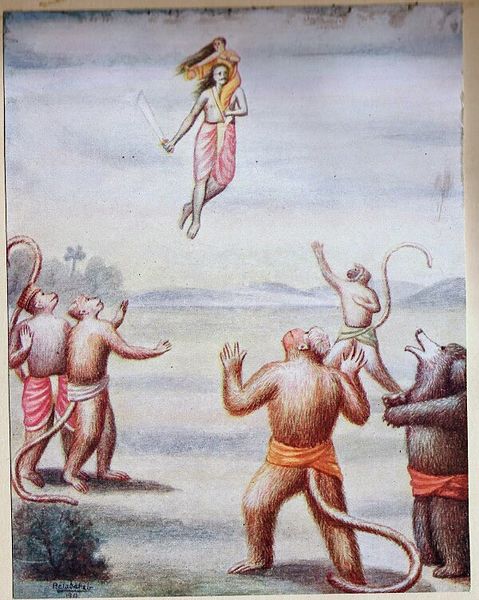Hanuman, also known as Maruti, Bajrangabali, and Anjaneya, is a deity in Hinduism, revered as a divine vanara, and a devoted companion of the deity Rama. Central to the Ramayana, Hanuman is celebrated for his unwavering devotion to Rama and is considered a chiranjivi. He is traditionally believed to be the spiritual offspring of the wind deity Vayu, who is said to have played a significant role in his birth. In Shaiva tradition, he is regarded to be an incarnation of Shiva, while in most of the Vaishnava traditions he is the son and incarnation of Vayu. His tales are recounted not only in the Ramayana but also in the Mahabharata and various Puranas.
Hanuman with a Namaste (Anjali Mudra) posture
Standing Hanuman, Chola Dynasty, 11th century, Tamil Nadu, India
Numerous 14th-century and later Hanuman images are found in the ruins of the Hindu Vijayanagara Empire.
Child Hanuman reaches for the Sun thinking it is a fruit by BSP Pratinidhi
In Hinduism, Vanara are either monkeys, apes, or a race of forest-dwelling people.
Rama and Vanara chiefs
When Ravana carried Sita first on his shoulders and then in the chariot, she threw some of her jewels towards the monkeys
A 20th-century painting depicting a scene from the Ramayana, in which Vanaras are building a bridge to Lanka.
Sampati meeting with Vanaras painted by Balasaheb Pandit Pant Pratinidhi








